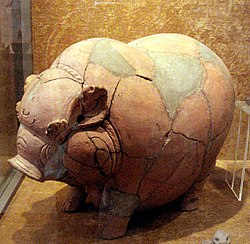

A piggy bank (sometimes penny bank or money box) is a coin container normally used by children, featuring a slot at the top to insert coins or folded bank notes. The piggy bank is known to collectors as a "still bank" as opposed to the "mechanical banks" popular in the early 20th century. These items are also often used by companies for promotional purposes, and many financial service companies use piggy banks as logos for their savings products.[ citation needed ]





